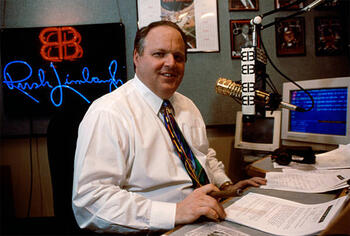
We have a relationship with AM radio that folks in other parts of the country maybe can’t understand. So our antennae go up when the electric-vehicle revolution begins to eliminate the “amplitude modulation” band from new vehicles, messing with a medium that has been important to our information, entertainment, cultural identity and even politics.
Millions of boomers grew up fidgeting with the AM dial in the evening so we could hear the strains of our favorite pop and rock music, broadcast over hundreds of miles by blowtorches such as WJR in Detroit and WGN in Chicago. Their signals get amplified in the ionosphere in the absence of sunlight and face little physical resistance from our basically flat regional topography.
Same for broadcasts of Major League Baseball teams that still often reside on AM radio. As they wiled away their summers on the lake, how many thousands of Michiganders relied on the staticky stylings of Ernie Harwell recounting Detroit Tigers games on the team’s AM-radio network? How many upstate Wisconsinites strained to hear Milwaukee Brewers announcer Bob Uecker make his trademark home-run call, “Get up, get up, get outta here!”?
Excellence in Broadcasting
Rush Limbaugh and his “EIB” network made his history-changing talk-radio audience on hundreds of AM stations that included most of the leading ones in our region. Farmers across Flyover Country depend on weather and commodity-price data they get from AM radio. Small AM stations remain important communications cogs in thousands of communities across the heartland. Countless long-haul truckers passing through still favor the connectedness and content of AM-radio programming over FM or satellite radio. And so on.
But some automakers have been excluding the AM-radio band from all-electric vehicles on the road or in development. They blame the particular engineering challenges of shielding the AM output in the vehicle from the powerful electromagnetic forces generated by EV propulsion systems. The other audio systems in the car, including FM and satellite radio and internet-fed channels, don’t suffer.
Maybe that’s all there is to it. It's been pointed out that this trend of AM-band elimination also risks communications that can be crucial during weather disasters or national emergencies, so government preparedness officials aren’t happy about this for their own very practical reasons. Massachusetts Senator Edward Markey, a Democrat, even launched an investigation into all of this in December.
But does the story go deeper?
I first noticed the absence of AM radio in a Volvo EV I was driving for review as an automotive journalist a couple of years ago and, while annoyed, dismissed it as a quirk. But it turns out Volvo was part of a vanguard of luxury-vehicle makers including Tesla and BMW that have been leaving AM out of their EVs as well.
Read the rest of this piece at Flyover Coalition.
Dale Buss is founder and executive director of The Flyover Coalition, a not-for-profit organization aimed at helping revitalize and promote the economy, companies and people of the region between the Appalachians and Rockies, the Gulf Coast and the Great Lakes. He is a long-time author, journalist, and magazine and newspaper editor, and contributor to Chief Executive, Forbes, the Wall Street Journal, the New York Times and many other publications. Buss is a Wisconsin native who lives in Michigan and has also lived in Texas, Pennsylvania and Florida.
Photo: courtesy Flyover Coalition.












